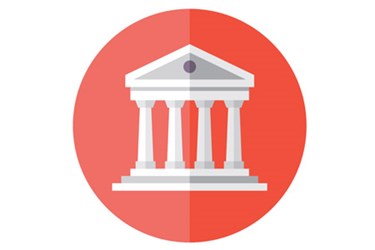FDA Regs Help Secure The Global Supply Chain
By Ed Miseta, Chief Editor, Clinical Leader

A better strategy, coordination, and additional tools will help keep medicines and ingredients safe.
Managing risk in the global supply chain has never been more critical. Ever higher amounts of risk have resulted from increased complexity, the growing numbers of producers, more individuals involved in the process, and supply chains having a greater geographic dispersion. As a result, more people are touching pharmaceutical products, legitimately or illegitimately. The result is what you might expect: greater incidences of intentional adulteration, counterfeiting, and substandard drug components showing up in the market. The lack of strong regulatory systems in many parts of the world only compounds the problem.
“When we step back and look at what is needed here, there are a couple of things that come to mind,” says Ilisa Bernstein, deputy director of the U.S. FDA Office of Compliance in the Center for Drug Evaluation and Research (CDER), speaking at the 2014 ISPE-FDA cGMP Conference. “First is a more coordinated strategic global approach, which is something the FDA has been looking into. There are different approaches being taken at different levels even within the U.S., from both regulators and various stakeholders within pharma.”
Bernstein also believes we will need new legal, regulatory, and enforcement tools. Laws, such as the Drug Quality and Safety Act (DQSA), which includes the Drug Supply Chain Security Act (DSCSA), give the FDA the ability and authority to better secure the global supply chain, but still more needs to be done. Stronger global standards and convergence of those standards are necessary, including, among others, current good manufacturing practices, good distribution practices, and good importer practices to help fill holes in supply chain security. Making the needed changes to secure drug products will require leveraging resources, and Bernstein notes that no one group will be able to do it alone.
First Develop A Strategy
Recently, the FDA revisited its supply chain integrity strategy. According to Bernstein, this involved looking at the entire journey of a drug, including its active/ inactive ingredients, all the way through to the finished dosage form. “We looked at all of the different things we are doing and then asked ourselves what more needs to be done,” she says. “We found there were three areas in which we could group all potential enhancements: prevention, detection, and response. In each of those areas, we then identified subareas where improvements could be made. Finally, we identified who needs to be doing what since we know the FDA can’t do this alone. We knew we would have to enlist the support of other supply chain stakeholders, including manufacturers, healthcare professionals, consumers, and procurement agencies buying drugs for other markets.”
Prevention is focused on securing the legitimate supply chain and has two components. The first is securing ingredients as they move through the supply chain. The second component involves tracking and securing the finished dosage forms. The idea here is cracking down on and tightening the legitimate supply chain so as to keep the bad stuff out and the good stuff in. Bernstein believes track and trace efforts will play a vital part in this process and will go a long way toward making the process transparent so everyone involved knows where the product is, where it is going, and who had interactions with it.
Proper detection of counterfeit and adulterated products and the mitigation and containment of the risks they present, will require better intelligence from across all facets of the industry. There also needs to be a better understanding of how to use that information once it is received. Better education of those involved in the supply chain will enhance the value of the information they both provide and receive.
Finally, responding to these risks in the most effective manner possible will require laws allowing FDA to do what is necessary to protect medicines. Here again Bernstein notes the FDA will rely on partners to assist in the effort. “Proper detection and response are based on proper surveillance, and once again the FDA can’t be everywhere,” she notes. “This is an area where leveraging resources by working with global regulatory partners and others in the industry will enhance surveillance efforts. Sampling is another good tool. Sampling at the border isn’t the answer, but it is a tool we can use to see what is coming into the country to minimize risk and detect potential problems.”
Ilisa Bernstein, deputy director of the U.S. FDA Office of Compliance in the Center for Drug Evaluation and Research (CDER)
New Laws Strengthen FDA Efforts
For years the FDA felt new laws needed to be put in place to properly secure drugs in the supply chain. Two new laws passed in recent years give the agency new tools and authority to do just that.
One of the primary provisions of the FDA Safety and Innovation Act (FDASIA), signed into law in 2012, was enhancing the safety of drugs and the supply chain. Bernstein notes the supply chain provisions contained in Title VII of the law will help the FDA to better collect and analyze data and enable risk-informed decision making. “It helps us partner and coordinate better with more regulatory authorities and enables us to drive safety and quality through strengthened enforcement tools and penalties. One of the things we need to know is who is out there in the marketplace so we can better identify and regulate them. Each manufacturing facility will now have a unique identifier, which is something we didn’t have before. We hope to make those identifiers global, so regulators will always know if they are talking about the same facility, be it in the U.S. or elsewhere in the world.”
There is also a new authority for excipient listings and a requirement that manufacturers of excipients be included when a drug is listed with the FDA. There are new authorities for cGMPs and requirements to adopt quality management systems as part of cGMPs. Additionally, there is recognition of foreign inspections, exchanging of information with foreign regulators, new penalties, and extraterritorial jurisdictions allowing the FDA to reach outside the U.S. to get jurisdiction over those who seek to harm the supply chain.
The notification provision is another new addition. If a manufacturer becomes aware of a counterfeit or intentionally adulterated product, it is now required to notify the FDA. Previously, there had been no requirement that the agency be notified.
Another new tool is the Drug Supply Chain Security Act, which is Title II of the DQSA, signed into law in November 2013. Although it applies only to finished prescription drugs, the regulation outlines critical steps to build an electronic, interoperable system to identify and trace prescription drugs as they are distributed in the U.S. According to Bernstein, a lot of people are not yet aware of the provisions, but she believes the impact will be felt by manufacturers, wholesalers, pharmacies, and to some extent doctors’ offices and clinics as well. Every product package will have a unique serial number to track the product through the supply chain. One distinction of this system will be the passing of key information as the product is sold. Initially, a lot of this information will be paper-based, but eventually it will become electronic.
One additional tool being used by the FDA is a new handheld device that can identify whether a product contains a genuine API. Use of the device, called CD3, is being scaled up at our borders and will soon be used in other countries as well for better detection.
“There are significant threats and challenges to securing the global supply chain, but there are also a lot of new and exciting initiatives,” adds Bernstein. “The key to keeping the supply chain safe is to monitor trends and then keep evolving to meet the continuing demands.”
 Dr. Ilisa Bernstein is Director of Pharmacy Affairs in the Office of the Commissioner at the U.S. Food and Drug Administration (FDA). In this capacity, she advises on domestic and international issues related to the regulation of medical products, including drugs, biologics, dietary supplements, and medical devices, as well as pharmacy-related issues.
Dr. Ilisa Bernstein is Director of Pharmacy Affairs in the Office of the Commissioner at the U.S. Food and Drug Administration (FDA). In this capacity, she advises on domestic and international issues related to the regulation of medical products, including drugs, biologics, dietary supplements, and medical devices, as well as pharmacy-related issues.
